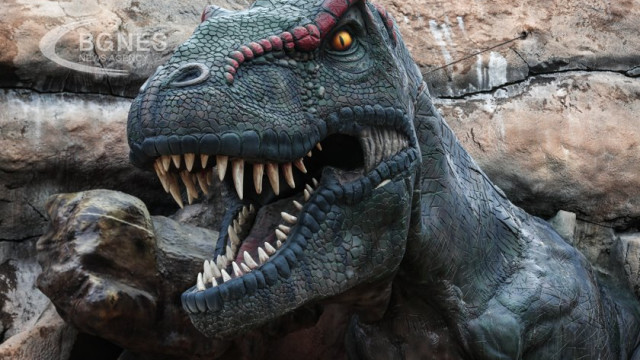Eventually, the dinosaurs were wiped out by the dust. This is the conclusion of computer simulations of the consequences of the impact of the asteroid that turned life on Earth 66 million years ago.
The cataclysm in the region of today's Chicxulub on the Mexican Yucatan Peninsula wiped out 75% of Earth's species, including the innocent dinosaurs. However, the exact nature of the deadly blow has puzzled scientists for decades, with soot-spewing wildfires, volcanic eruptions and massive amounts of sulfur blamed.
In a paper in Nature Geoscience, Belgian researchers say that the "exact killing mechanisms" triggered by the impact are not yet sufficiently well understood, and that too little attention has been paid to the role of the potentially trillions of tons of dust thrown up by the powerful event.
Swirling for years in the atmosphere, soot, sulfur and dust can block the sun and contribute to a global winter in which vegetation fails to thrive, with devastating consequences for the animals it supports.
To dig deeper into the role of the various factors, the scientists ran simulations of the ancient climate, taking into account measurements of fine particles retrieved from a site in North Dakota where a layer of dust formed by the Chicxulub impact had settled. According to the simulations, dust of the size found in the Dakotas could have remained in the atmosphere for up to 15 years after being blasted into the sky. By blocking the sun's rays, up to 2,000 billion tons of it could stop photosynthesis for nearly two years and cool the planet by up to 15 degrees Celsius.
Created from crushed granite and other rocks at the impact site, the dust "most likely triggered the last mass extinction by disrupting photosynthetic activity," said Jem Berk Senel, a researcher on the study at the Royal Observatory of Belgium in Brussels.
In the simulations, silicate dust turns out to be "the most effective blocking factor for photosynthesis," adds Philippe Claes, a geologist and planetary scientist at the Free University of Brussels and co-author of the study. "It makes the atmosphere opaque to sunlight by impeding the process of plant photosynthesis."
According to computer models, it took two years for photosynthesis to resume.
Steve Brusat, professor of palaeontology and evolution at the University of Edinburgh, who was not involved in the research, described the asteroid that killed the dinosaurs as "apocalyptic".
He said: "It's the biggest asteroid to hit Earth in half a billion years, and it hit with the force of over a billion nuclear bombs combined. But it wasn't the real cause of the death of the dinosaurs and 75% of the rest of the species that died out. What really led to their demise was what happened afterwards, as the dust and dirt from the asteroid impact entered the atmosphere and blocked out the sun. Earth darkened and froze for several years. The asteroid didn't kill all the dinosaurs at once, but was a stealth killer that triggered a war of attrition that drove three out of every four species to extinction." /BGNES







